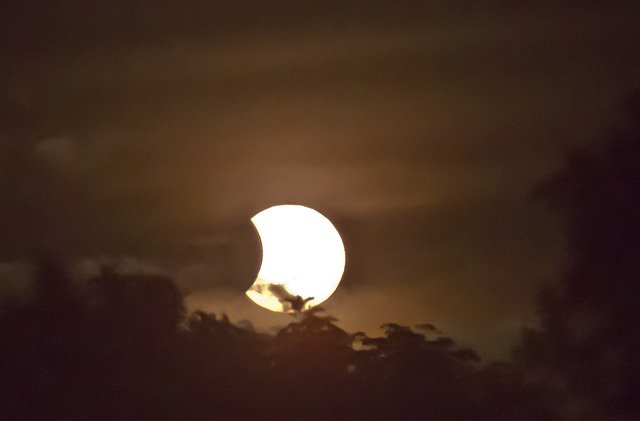
Tomorrow morning (June 10) a partial eclipse of the Sun will take place.
A solar eclipse occurs when the Moon comes directly between the Sun and the Earth.
Tomorrow’s eclipse will be visible to people in the UK. On this occasion the Moon’s disc will be slightly smaller than that of the Sun, leaving a bright ring around the lunar silhouette, so it won’t be a total eclipse where everything goes dark. Eclipses like this are called annular after the ring seen at mid-eclipse.
Over the UK the Earth, Moon and Sun are less precisely aligned. This means that the Moon appears to only take a fairly small bite out of the edge of the Sun’s disc. The precise times of the eclipse and its appearance vary with location. In London the eclipse starts at 10,08am mid-eclipse is at 11.13am when 20% of the Sun is obscured by the Moon, and the eclipse ends at 12.22pm.
The next full solar eclipse in the UK will happen on 23 September 2090.
How to observe – advice with thanks to The Royal Astronomical Society
Viewing a solar eclipse is potentially hazardous and should only be attempted with caution. You should never look directly at the Sun!
Eclipse glasses If you have official CE-marked eclipse glasses from previous events these may be safe to use, but only if they have been stored safely and the surfaces haven’t been damaged in any way. Check that there are no tiny holes in the coatings, or wrinkles where the coating may have worn away.
Mirror projection If you don’t have any eclipse glasses, then you can use a compact or small shaving mirror. Use the flat side, not the concave or magnifying side.
Cover the mirror with paper in which you have cut a hole about 4 mm or an eighth of an inch across. It doesn’t have to be neat, or even round. Then shine the Sun’s reflection from the mirror into a room or onto any surface that’s in shade. You’ll see a circular spot of light which is in fact an image of the Sun. A projection distance of about 5 metres (15 feet) works perfectly, giving an image about 50 mm (2 inches) across, and you can view the image on a wall or a white piece of paper or whatever you have to hand.
As the eclipse progresses you’ll see the Moon progressively taking a bite out of the edge of the Sun. It will be a little fuzzy around the edges, but it will be obvious to see.
Other simple methods of projection, such as using a pinhole in the side of a cereal packet, are possible but the image size is very small – only about 1 mm. So the fairly small bite from the Sun will hardly be visible.
Projection using binoculars or telescope. You can use a small telescope or binoculars with great care to project the Sun’s image for a very sharp view. Point the instrument at the Sun, judging from its shadow when it is in line. Hold a sheet of white paper about 30 cm (12 inches) away and you should see a bright spot appear when everything is lined up. You will probably need to focus to get a sharp image.
If you use a tripod make sure that there’s no chance that someone can accidentally look into the eyepiece of the instrument – this is the main danger with this method.
Details with thanks to The Royal Astronomical Society, the Society for Popular Astronomy (SPA) and the British Astronomical Association (BAA)

